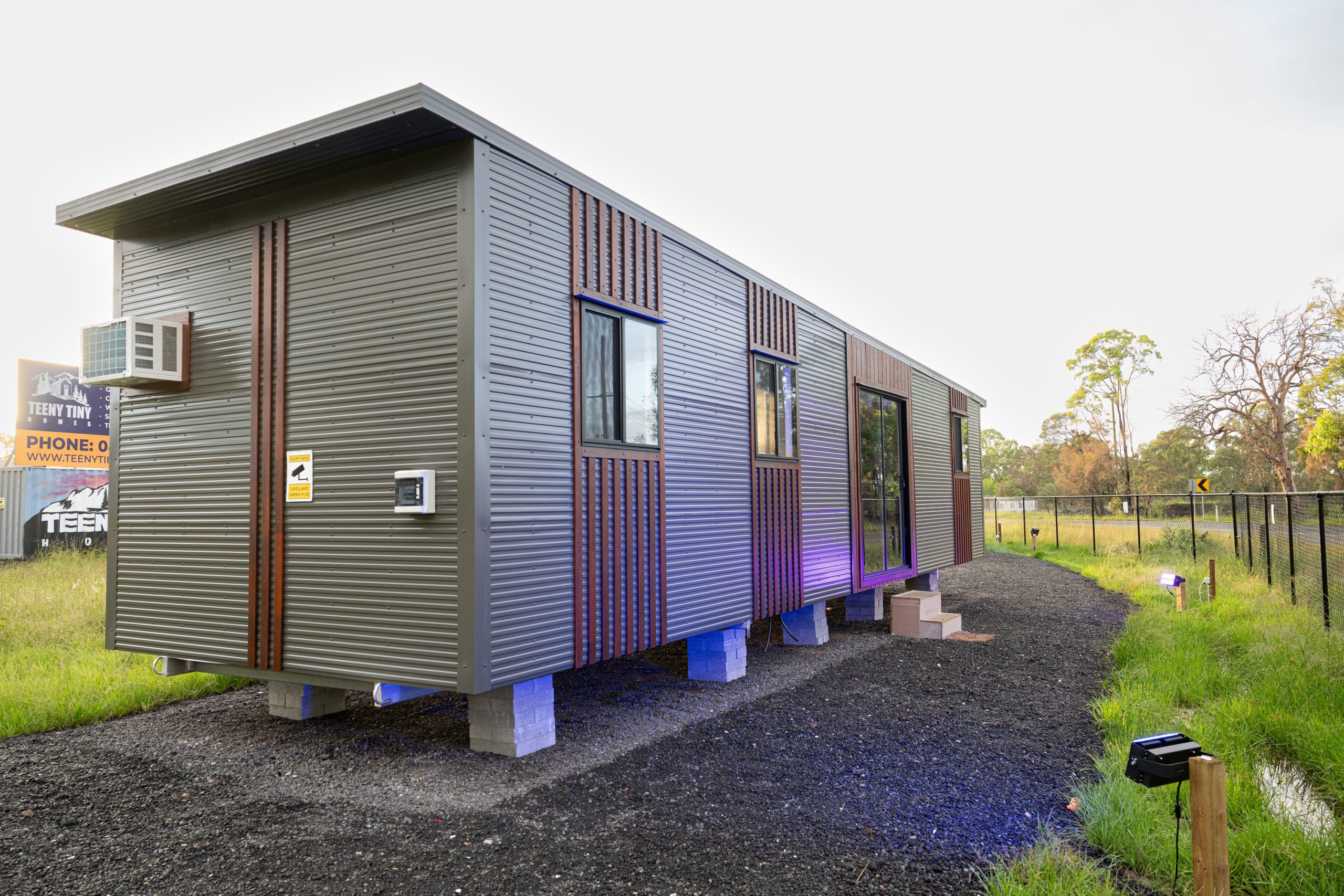Off-Grid Tiny Houses: Unplug from the Grid, Plug into Nature
13 June 2024
Experience eco-living at its finest with off-grid tiny houses from Teeny Tiny Homes. Unplug from the grid and reconnect with nature. Reach out to us today!
Many Australians are looking to go back to a more straightforward, environmentally friendly way of life in a world where technology and urbanisation are the norm. The off-grid tiny house movement is a developing trend that enables people to live more sustainably and in tune with the environment while downsizing their living areas. These compact dwellings offer a unique opportunity to unplug from the grid and connect with the great outdoors, all while reducing one’s environmental footprint.
Design Considerations for Off-Grid Tiny Houses
Building an off-grid tiny house requires careful consideration of various design elements to ensure a comfortable and sustainable living experience.
- Solar Power Systems – Harnessing the sun’s power is a crucial component of off-grid living. Solar panel systems, coupled with battery banks, provide a reliable and renewable source of electricity for your tiny home, allowing you to power essential appliances and lighting.
- Rainwater Harvesting and Filtration – With limited access to municipal water sources, rainwater harvesting, and filtration systems are essential for off-grid tiny houses. These systems collect and purify rainwater, providing a self-sufficient water supply for drinking, cooking, and cleaning.
- Composting Toilets and Greywater Systems – Off-grid living necessitates sustainable waste management solutions. Composting toilets and greywater systems help minimise water consumption while efficiently disposing of waste in an environmentally friendly manner.
- Sustainable Materials and Construction – To truly embrace the off-grid lifestyle, it’s important to consider sustainable building materials and construction methods. From recycled and locally sourced timber to energy-efficient insulation, every aspect of your tiny home should be designed to minimise its environmental impact.
Essential Features for Off-Grid Tiny Houses
While compact in size, off-grid tiny houses must incorporate several essential features to ensure a comfortable and functional living experience.
- Compact and Functional Layout – Efficient space utilisation is key in tiny house design. Incorporate multi-functional furniture, clever storage solutions, and thoughtful layouts to maximise every square metre of your living space.
- Efficient Insulation and Ventilation – Proper insulation and ventilation are crucial for maintaining a comfortable indoor climate while minimising energy consumption. Consider investing in high-quality insulation materials and incorporating passive cooling techniques like cross-ventilation to keep your tiny home cool during hot Australian summers.
- Off-Grid Appliances and Utilities – From energy-efficient refrigerators and stoves to eco-friendly washing machines and water heaters, choose appliances and utilities designed specifically for off-grid living. These products are optimised for low energy consumption and can operate efficiently on renewable power sources.
- Ample Natural Lighting and Ventilation – Embrace the beauty of natural light and fresh air by incorporating large windows, skylights, and strategically placed vents into your tiny house design. This enhances the indoor ambience, reduces reliance on artificial lighting, and promotes natural ventilation.
As the demand for sustainable living solutions continues to grow, off-grid tiny houses offer a unique and environmentally conscious alternative to traditional housing. If you’re ready to take a leap into off-grid living, trust the experts at Teeny Tiny Homes to guide you through the process. With our expertise in designing and building custom off-grid tiny houses, we can help you create a space that seamlessly blends functionality, sustainability, and a strong connection to nature.
Optimized by: Netwizard SEO









